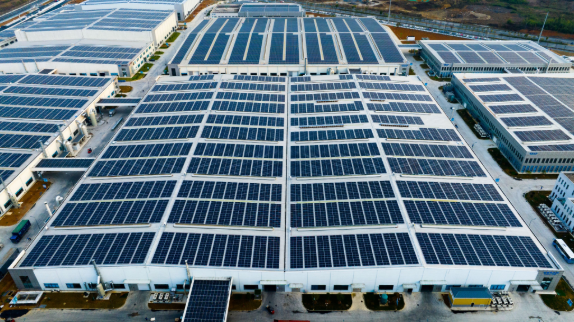Project Location: Dali, Yunnan Province, China
Capacity: 1.7 GW
Annual Total Solar Irradiance: 1721.4 kWh/㎡
Average Annual Power Generation: 2.66 billion kWh
Annual Coal Savings: 802,000 tons
Annual CO2 Emission Reduction: 2.184 million tons
Delivery Timeline: Ongoing since 2023 (currently under construction)
Products: Huasun HS-210-B132 heterojunction (HJT) solar modules

Introduction:
This project is situated in Yunding Village, Dali Prefecture, Yunnan Province, China The region is characterized by hilly and mountainous terrain, which poses challenges for traditional farming and solar project development. However, it benefits from a favorable climate, featuring high summer temperatures and abundant sunlight, along with dry winters that receive minimal rainfall. These conditions are ideal for solar energy generation. The photovoltaic project not only optimizes land use but also supports the local transition to sustainable development with renewable energy.
Advantages:
The project site experiences an annual average solar irradiation of 1,445 kWh/m², with average temperatures surpassing 24°C from April to September. The module surface temperatures can exceed 50°C during project operation. The Huasun HJT modules feature a superior temperature coefficient of -0.24%/°C , which effectively reduces power loss due to high temperatures. This advantage allows Huasun HJT modules to outperform TOPCon and PERC products of the same size, resulting in enhanced power generation yields under comparable conditions.
Additionally, Huasun HJT modules exhibit minimal Light Induced Degradation (LID) and Potential Induced Degradation (PID), further ensuring sustained power generation throughout the project’s lifecycle. With an ultra-high bifaciality of up to 95% , which is over 10% higher than that of TOPCon and PERC alternatives, along with their superior low-light performance, these HJT modules maximize overall energy yields for customers.

Comparative analysis of the Huasun 210-132 HJT module versus the mainstream TOPCon 210-132 reveals significant financial advantages: a 3.7% reduction in Balance of System (BOS) costs , a 3% decrease in Levelized Cost of Energy (LCOE) , and an approximate 5.3% improvement in Internal Rate of Return (IRR) . The overall power generation increase exceeds 3%, highlighting strong economic viability of the HJT modules for the solar projects.
Challenges:
The rolling hills of the project site posed significant challenges for construction crews and material access. This uneven terrain negatively impacted construction efficiency, particularly in the piling and positioning of solar modules. Additionally, the complex logistics of the mountainous region complicated material transportation and increased the risk of damage to the solar modules.
Soil characteristics and high levels of instantaneous precipitation further complicated project implementation and module reliability. However, the construction team effectively managed these challenges, ensuring optimal site conditions. As a result, part of the project was successfully connected to the grid, and Huasun HJT modules received high praise from the customer for their outstanding reliability, quality, and service.

Achievements:
With a total installed capacity of 1.7 GW, the project is expected to generate an average of 2.66 billion kWh of electricity annually . This output will save approximately 965,600 tonnes of standard coal and reduce carbon dioxide emissions by about 2,369,800 tonnes each year. Spanning around 17.3627 km² of mountainous terrain, the project significantly improves land development and utilization. Furthermore, it aligns with local cultural and natural tourism initiatives, providing substantial social and economic benefits.





































